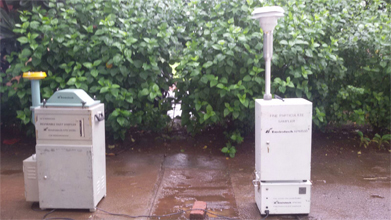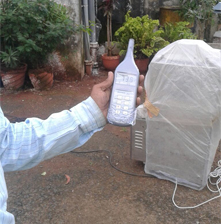Environmental Monitoring
 What is Environmental Monitoring and Assessment
What is Environmental Monitoring and Assessment
Pollution has become a great problem nowadays. It is necessary to know the quality of environment in which we live to address this issue. That’s when Environmental Monitoring and Assessment comes into picture.
It’s a process to find the amount of pollutants available in Air, Water, Soil and steps to be taken to reduce pollution after analysis of data received from Environmental Quality Monitoring. This is the primary process before preparing Environmental Impact Assessment for particular project. In this process sample is collected from suitable or representative area. It is stored in controlled temperature conditions. Once it is reached in analytical laboratory various tests are performed to know the presence of particular parameters. After that analysis is done to identify source of pollutants and alternate ways can be suggested to reduce quantity of pollutant. Environmental Monitoring generates complex and critical information to take decisions and predict the future of environment.
Types of Environmental Monitoring and Assessment
- Ambient air quality Monitoring
- Stack Emission Monitoring
- Water Quality Monitoring
- Soil Testing
- Noise Level Monitoring
 Ambient Air quality Monitoring
Ambient Air quality Monitoring
There are two types of air quality monitoring i.e. Ambient and Indoor air quality. Ambient Air Quality monitoring is carried out in industry or site premises. Indoor/work zone air quality monitoring can be carried out in Home, office, workplace etc. In Air quality monitoring Direction, Velocity and Pollutants are measured. Parameters measured in Air Quality monitoring are SO2 (Sulphur Dioxide), NOx (Oxides of Nitrogen), Particulate Matter (PM 10 and PM2.5), Ozone, Lead, CO (Carbon Monoxide) etc.
 Stack Emission Monitoring
Stack Emission Monitoring
The stacks/Chimneys attached to boiler, furnace, DG Sets are monitored by regular sampling for the flue gases. Parameters measured are SO2 (Sulphur Dioxide), NOx (Oxides of Nitrogen), Total Particulate Matter (TPM) CO (Carbon Monoxide) etc.
The Process Stacks are also analyzed for particulate matters and various gasses.
 Water Quality Monitoring
Water Quality Monitoring
In Water quality monitoring samples are taken from water source (Eg. River, lake or tap water etc.) by grab sampling or by regular intervals, Passive sampling or remote sampling. then in laboratory Chemical, Biological, radiological, microbiological and E-coli test to determine quality of water.
 Soil Monitoring
Soil Monitoring
Initially soil samples are collected by grab sampling method or composite sampling method. It is further tested in analytical laboratory. It is tested for pH, Chlorine, Sulphate, Phosphate, LOD, LOI etc. Soil analysis can be helpful to find out soil fertility and corrective action can be taken to improve yield.
 Noise level Monitoring
Noise level Monitoring
Noise level Monitoring is carried out with Sound level meter.
Noise Level can be observed for 24 hours to find out trends in noise level fluctuations.
Noise Impact Assessment is also part of Environmental Impact Assessment.
 Lighting Assessment
Lighting Assessment
In Workplace Lighting assessment or Illumination Survey can be done to find out whether Sufficient light is present at workplace in Companies. It helps to find out blind spots in workplace to avoid health hazards. Environmental Monitoring and Assessment can be helpful in assessment of pollution control requirement, track progress of environmental quality, identify newly emerging problems and to find new opportunities for improvements. Data received from environmental Quality Monitoring is analyzed and converted in charts and in simple language so that non- technical individuals can understand. This data can be helpful for Farmers, Foresters, Hunters and fishers etc. to plan their schedule.
Copyright © ENVIROTECH RESEARCH PVT. LTD. 2017 All Rights Reserved Designed by : Ameya Computers



